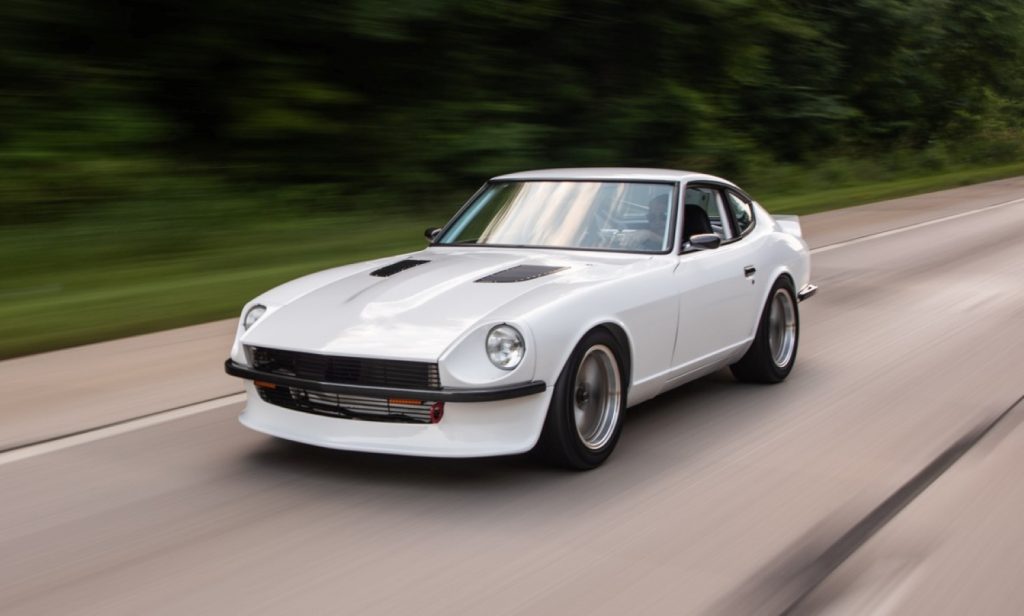
Eric Ritz got his love of vintage Datsuns—and all things car—the honest way.
“My parents had me at the racetrack when I was six months old,” he told us. “I grew up in the paddock of various road courses across the East Coast while my dad was racing his SCCA Datsun 510. Around 1996 my dad moved away from racing and he and I began building classic cars and show cars.”
One of those cars is this 1973 Datsun 240Z. Fourteen years in the making, the Z combines the Ritz family’s history with Datsun products with their bent for hot-rodding stuff. The car was originally a road race-style build commissioned by a friend of Eric’s father. Dad found a rust-free ’73 body shell on eBay and sent it to McMahan Autosport in Akron, Ohio to have a custom steel roll cage installed and the chassis reinforced. When the car came back to their shop, Eric and his father plunked an LS2 engine and a T-56 six-speed transmission from a 2006 GTO in the Z’s engine bay. They fabbed an adjustable suspension, bolted on a Nissan Q45 rear axle with a limited slip and custom-made axles, and put disc brakes on all four corners.

After six years of work, Eric and his dad delivered a raw but very drivable car to the owner, who drove it for a while but eventually lost interest. Why anyone would not like an LS-powered Z car is beyond us, but Eric wasted no time and bought the car back. He drove it for about a month before tearing it back down and mounting the body on a rotisserie for a proper redo.
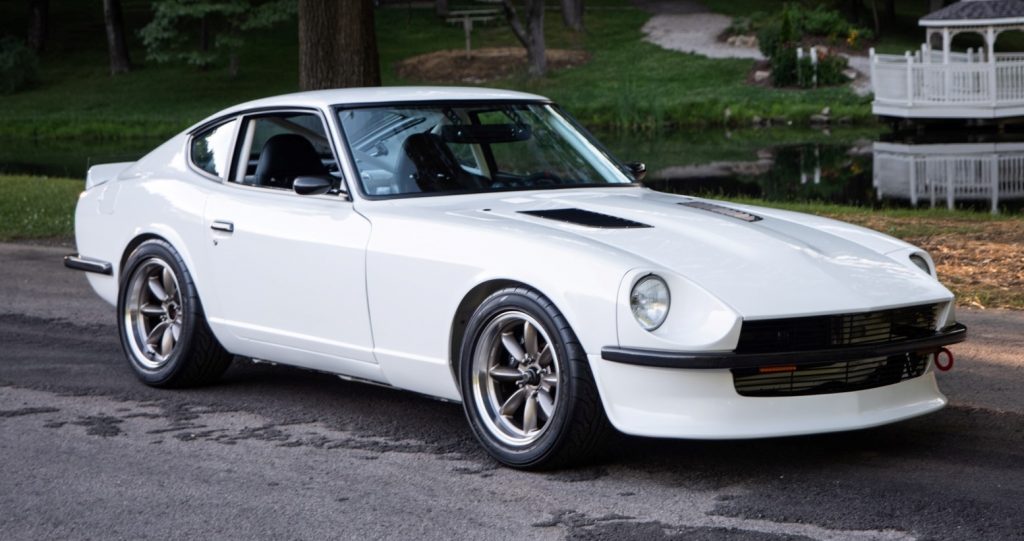
Drivetrain
The LS2 was upgraded with a COMP Cams rocker arm trunnion kit, a FAST intake manifold and fuel rails, MSD coil packs, and custom-built Sanderson headers. Eric fabricated a custom airbox with a K&N filter element and wrapped it in DEI Reflect-a-Gold heat shield material. A Davies Craig electric water pump and a Griffin radiator keep engine temperatures in check. The LS2 gets its fuel from a 1999 Camaro fuel tank with a factory in-tank fuel pump.
The T-56 was torn down and upgraded with bronze shift pads, carbon synchros, and billet keys by Liberty Gears in Detroit, Michigan. The clutch was replaced with an LS7 unit and an aluminum Fidanza flywheel.
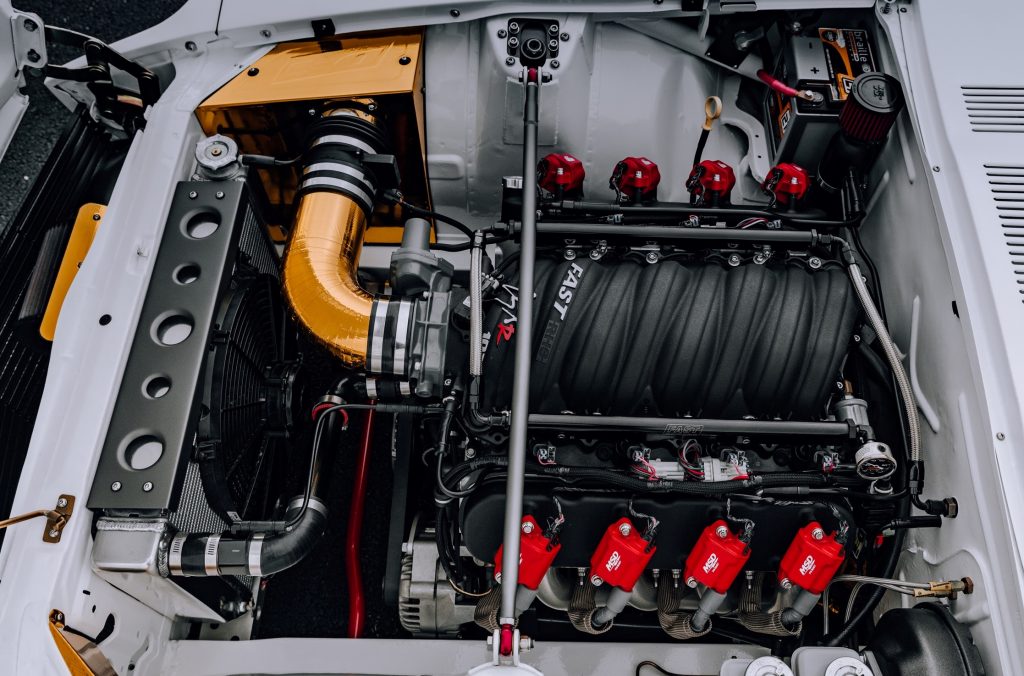
Suspension & Brakes
The suspension from 240Z 1.0 was retained. It features front and rear coilover suspension conversions from Tech Toy Tuning with ST Suspensions sway bars, QA1 high-travel coilover springs, and Bilstein front strut inserts for, of all things, a first-gen VW Rabbit. According to Eric, they fit the 240Z strut but have two inches less travel, allowing the struts to be shortened. 16 x 8 Rota RB wheels are wrapped with 225/50-16 Yokohama ADVAN Neova ADO8 tires.
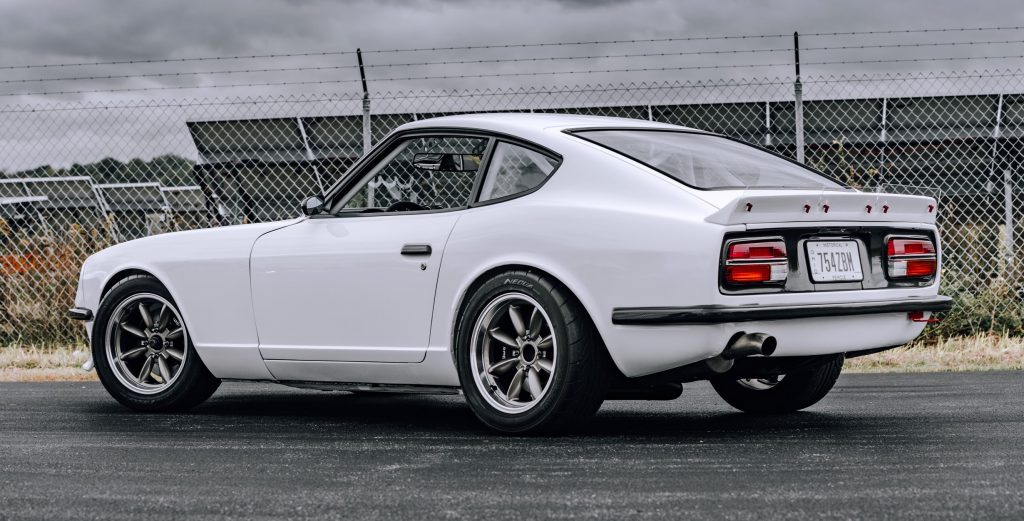
The disc brake system features 12 inch diameter Hawk DTC rotors and Wilwood four-piston calipers with Hawk HPC pads. The stainless steel brake lines were tucked up into the chassis as much as possible to protect them from flying junk and for a clean appearance.
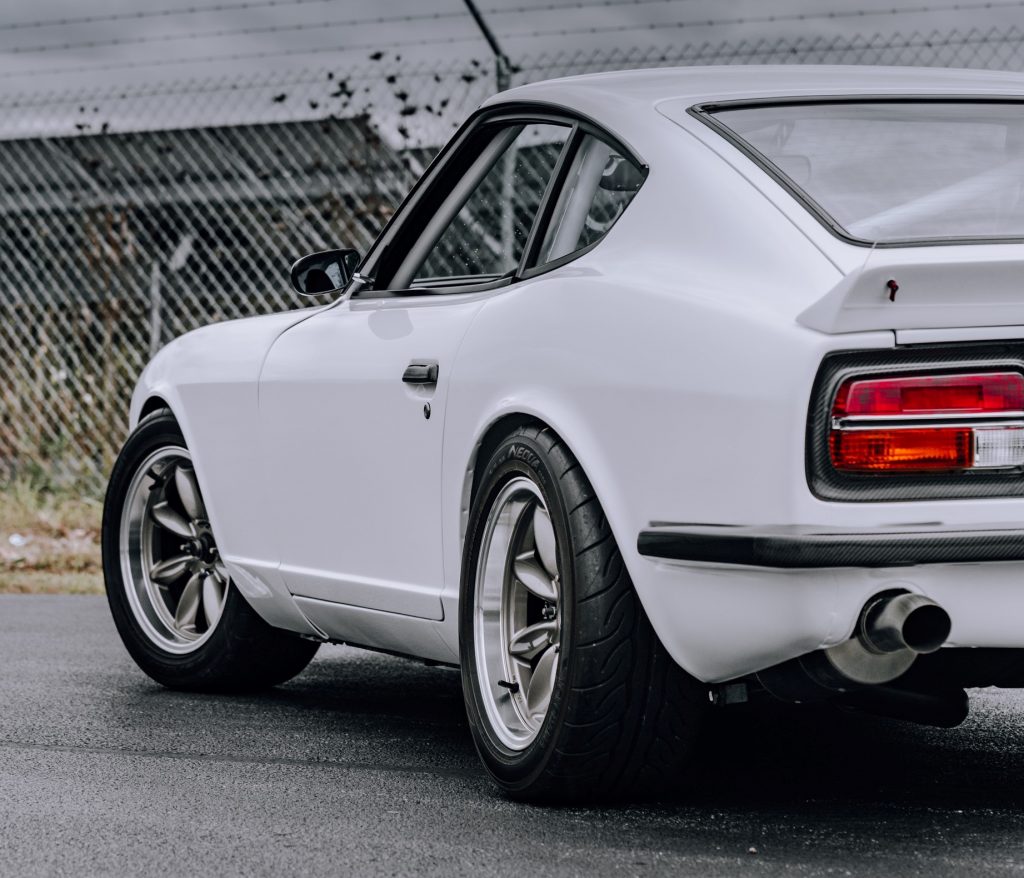
Body & Paint
The 240Z never got past the primer stage, which gave Eric the opportunity to modify the body and paint it to his liking. The car was coated inside, outside, and underneath in the brightest white basecoat-clearcoat paint he could find. DEI heat shielding was used in the floor and tunnel areas to combat the heat in the cockpit. Eric added Trackspec hood vents designed for a BMW M36, carbon fiber bumpers and door handles, plus a carbon fiber taillight panel from TC3 Innovation Composites in Poland (yes, the country).
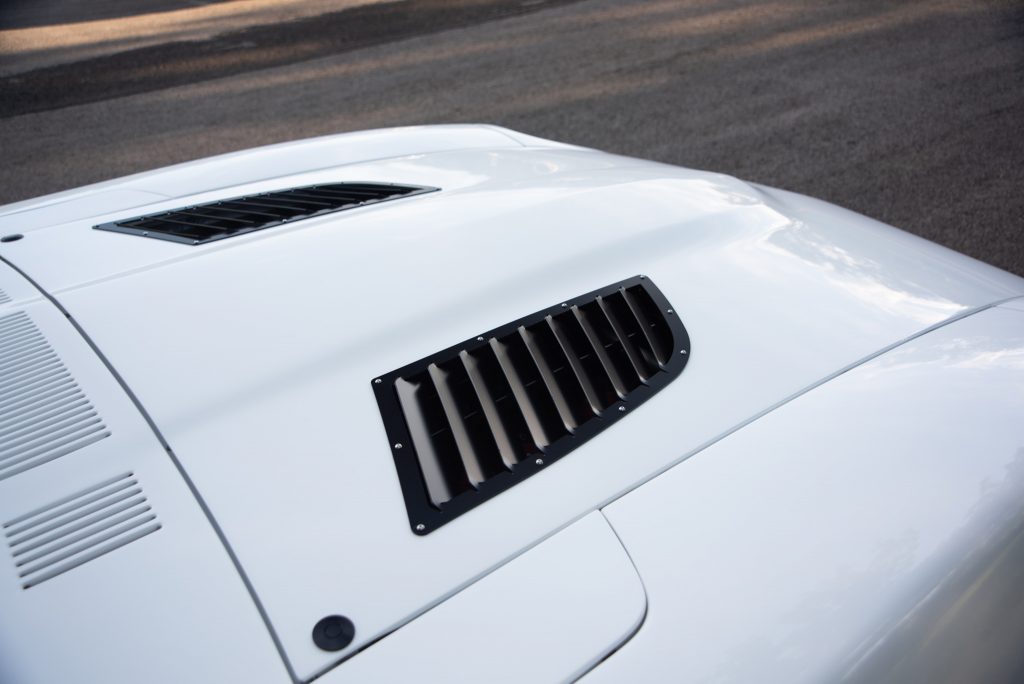
The BRE-style fiberglass rear wing was modified with laser cut acrylic extenders Eric designed. “I was influenced by real race cars that have an adjustable clear spoiler,” he explained. “They probably don’t do anything to help performance at the track, but they look good!”

Interior
Eric and his father fabricated the aluminum floor panels using dimple dies and a bead roller and mounted them over the factory sheetmetal. They built the dash and console from aluminum and covered them in black suede with carbon fiber accents. Eric designed the 1/8 inch aluminum trim bezels and switch labels. The labels are a plastic with red vinyl facing; the vinyl disappears when the plastic is laser etched, revealing the white label text. The seats are Recaros from a Mitsubishi Evo8 on custom mounts.
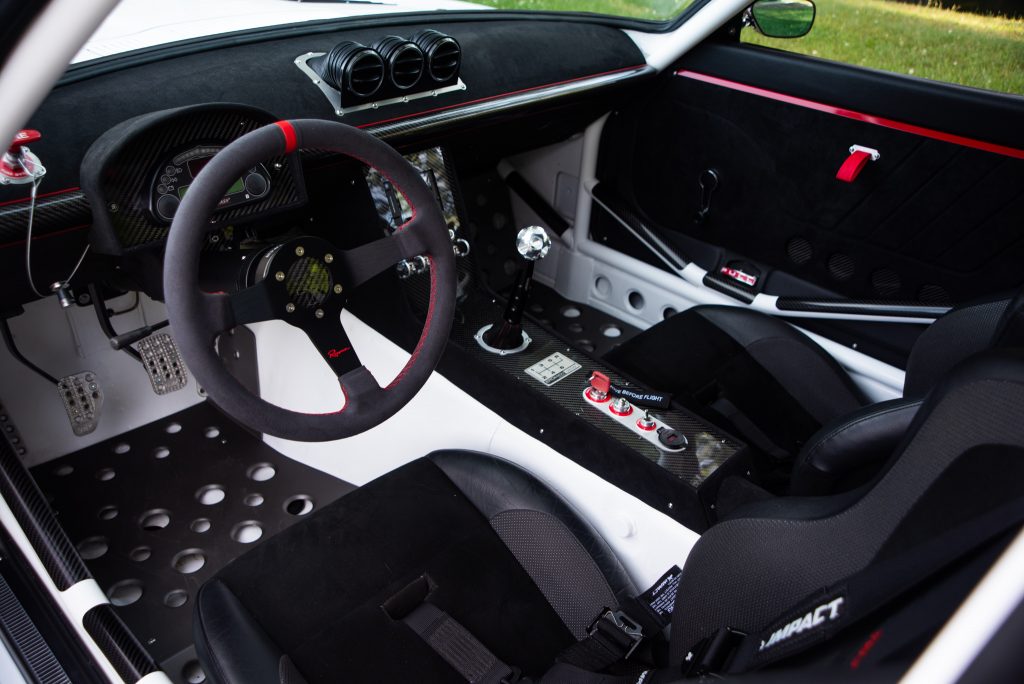
Other interior goodies include a digital instrument panel, Impact Racing five-point harnesses, a JOES Racing shift lever, and OMP aluminum pedal pads.
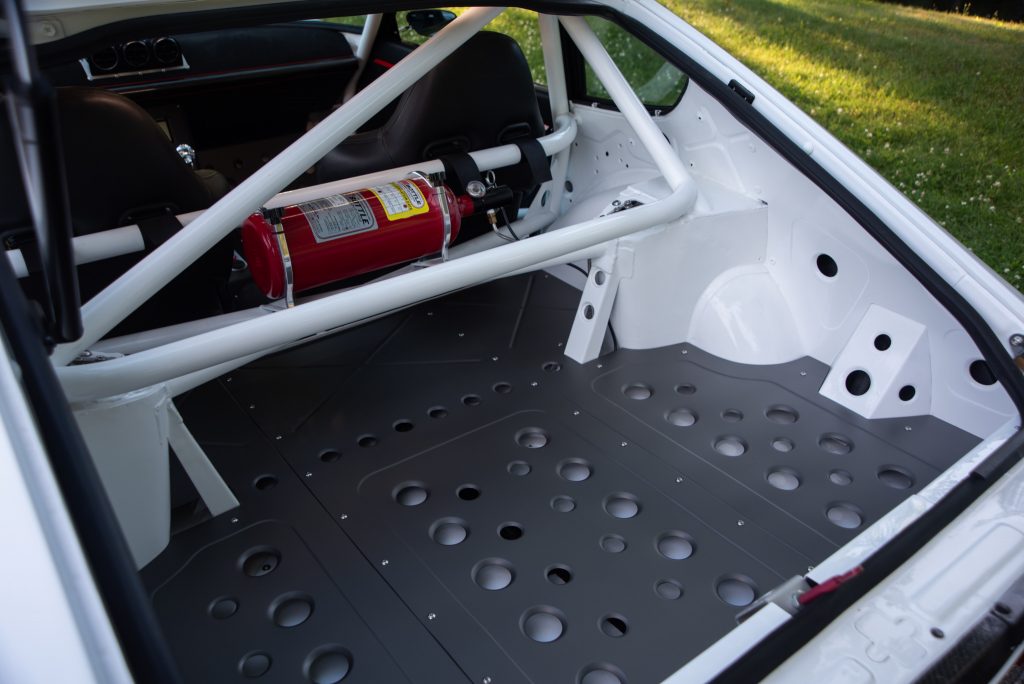
Other Stuff
Eric installed a three-zone fire system that covers the interior, engine compartment and fuel tank area. He took the extra time to run the lines neatly and conceal the spray heads. The Z was rewired with a Ron Francis Bare Bonz wiring harness, and a Braille lithium battery sends electrons through it.
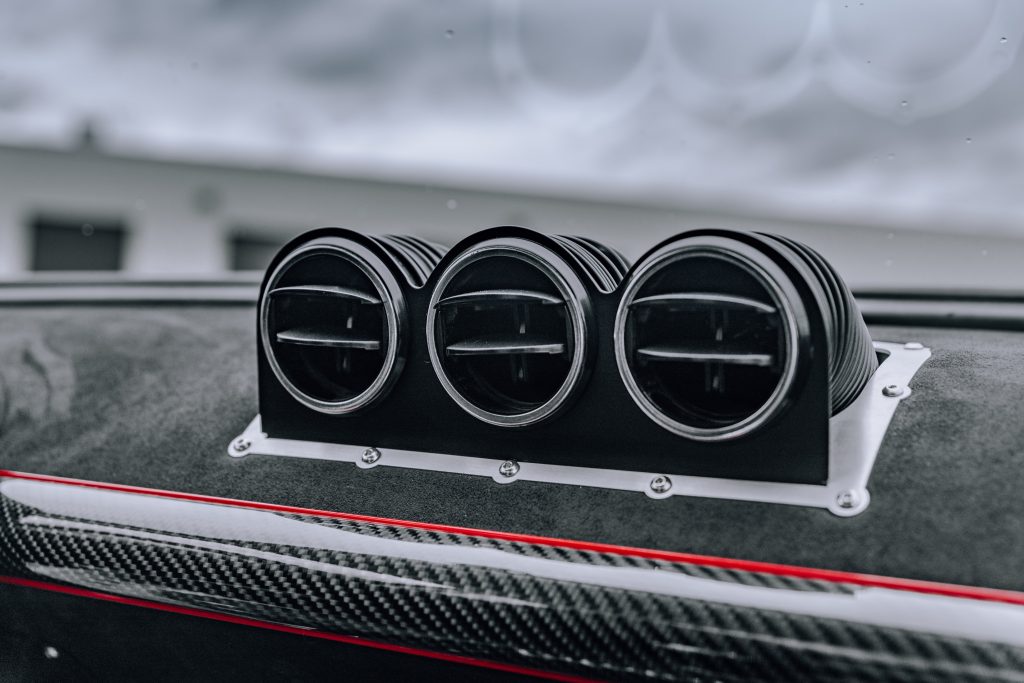
Saying Eric loves the Z would be one of the biggest understatements of the year.
“It’s proven to be a nice balanced, reliable car that just makes you grin when you drive it,” he said. “The best part is it drives around town like a nice new corvette, but once you push the gas pedal you realize you’ve got a lot of LS power in a car that’s 1,000 pounds lighter.
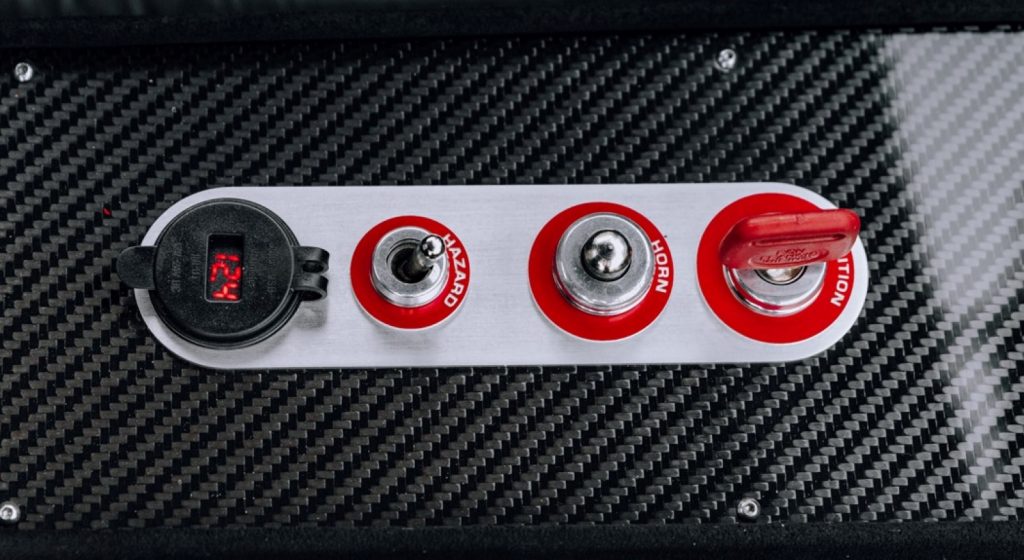
Eric hasn’t done any road course or autocrossing yet, but he does know the Datsun romps at the drag strip.
“My dad and I took it to Summit Racing Motorsports Park for a couple of fun runs down the track. With the two of us in the car, so-so shifting, and awful reaction times, we still ran a best of 12.3 seconds at 116.60 MPH. With some practice or a driver that knows what they are doing, I think 11s are in easy reach.”
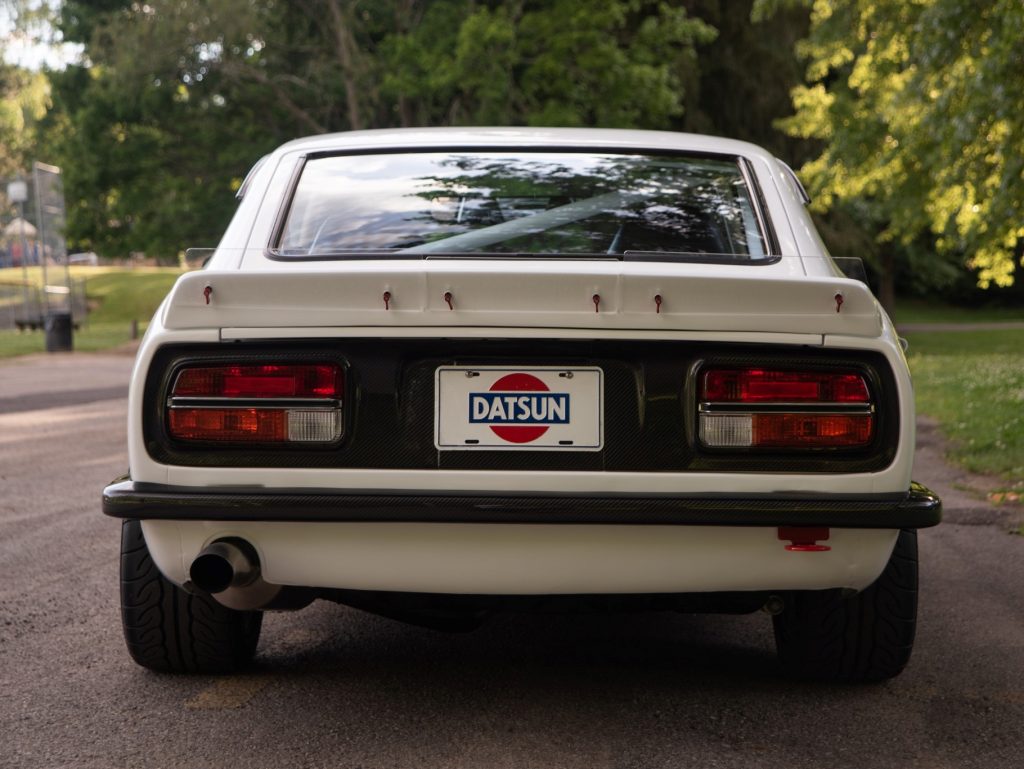
Drivetrain Parts
- FAST LSXR Intake Manifold
- FAST High-Flow Billet Fuel Rails
- MSD Pro Power Coil Set
- COMP Cams Retrofit Trunnion Upgrade Kit
- Holley Cast Aluminum Valve Covers
- Davies Craig Electric Water Pump
- Fidanza Billet Aluminum Flywheel
- DEI Reflect-a-Gold Heat Barrier
- Accel Xtreme 9000 Ceramic Ignition Wire Set
- K&N Air Filter
- JET Performance MAF Sensor
- Griffin Universal-Fit Radiator
- ATI Super Damper
Interior Parts
- Davies Craig Water Pump and Fan Controller
- JOES Racing Products Aluminum Shift Lever
- Impact Racing Rotary Cam Race Harnesses
- Vintage Air Louvers
- Vintage Air Duct Hose
- Quik-Latch Twist-Lock Mini Latch (used for glove box)
- OMP Aluminum Pedal Pads
Exterior Parts
- Trackspec Hood Vents
- Quik-Latch Mini-Latches (used for hood latches)
- AeroCatch 120 Series Plus Locking Hood Pins (used as trunk latch)
- United Pacific LED Turn Signal Bars (used for front turn signals)
Chassis & Brake Parts
- QA1 High Travel Coilover Springs, Front
- QA1 High Travel Coilover Springs, Rear
- ST Suspensions Sway Bars
- Hawk DTC Front Brake Rotor, Passenger Side
- Hawk DTC Front Brake Rotor, Driver Side
- Hawk HPS Front Brake Pads
- Hawk HPS Rear Brake Pads
- Yokohama ADVAN Neova AD08 Tires, 225/50-16
Misc. Parts
- DEI Floor and Tunnel Shield
- Braille Battery Green Lite Lithium Battery
- Braille Battery Mount
- Allstar Performance Inline Duct Blowers (uses as brake cooling fans)
- Ron Francis Bare Bonz Wiring Harness
- Ron Francis Synergy Series Ignition Switch
- Ron Francis Synergy Series Headlight Switch
- Ron Francis Synergy Series Pushbutton Starter Switch
- Summit Racing Aluminum Fuel Line, 3/8″
- SprayMax 1K Trim Paint, Black

great car. I would love to drive it. I built a 240 with a small block Ford, C4, gearvender o. d. Big brakes, and Toyo RA1 tires.
If I could find it I would buy it back tomorrow.
I ran it thru at Sacramento Raceway w/o mufflers. It bogged, I almost aborted the run. I get the time slip, 11.88 @ 117. I figured they gave me the wrong time slip. I made one more pass it ran 11.87 @ 118.
We loaded it up and went home, smilin all the way.
Now that’s an absolutely beautiful Z car and I absolutely love the white‼️
I have a 1971 240Z in really good shape that I have been working on for two years and now I am looking for low profile tires to put on it. I don’t want to flare my fenders or change the body in any way, so I was woundering what you would suggest I an looking for a tire and wheel that will really help with handling I got a Boxster S, and I have realized that my Z needs some help. So your recominazuon would be what?
I am building a ’72 Z with a bored iron block LS2 408 ci. with a 4L80E trans. Street car should be about 500 rwhp. I’ll have to use some fat tires! I’m done most of what you have done with the suspension. Ford 8.8 diff with custom drive axles and stub axles from Whitehead. It should be a fun.